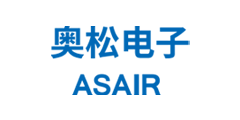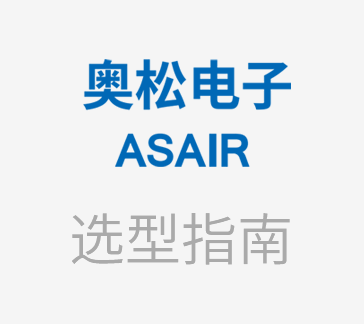Precautions for Temperature and Humidity Sensor Measurement




Today ASAIR will intrdouce the precautions for Temperature and Humidity Sensor measurement from the below sides.
Select The Measurement Range
Like measuring weight and temperature, selecting a humidity sensor must first determine the measurement range. Except for meteorological and scientific research departments, those engaged in temperature and humidity measurement and control generally do not require complete humidity measurement (0-99.9%RH).

Select The Measurement Accuracy
The measurement accuracy is the most critical indicator of the humidity sensor. Every increase of one percentage point is a step up, or even the last level, for the humidity sensor. Because to achieve different accuracy, the manufacturing cost varies greatly, and the selling price also varies greatly. Therefore, users must tailor their clothes, and it is not advisable to blindly pursue "high, precise and sharp." If the humidity sensor is used at different temperatures, the display value should also consider the influence of temperature drift. As we all know, relative humidity is a function of temperature, and temperature seriously affects the relative humidity in a given space. The temperature changes by 0.1°C. A humidity change (error) of 0.5% RH will occur. If it is difficult to achieve a constant temperature in the application, it is inappropriate to propose that the humidity measurement accuracy is too high.
In most cases, if there is no precise temperature control method, or the space to be measured is not sealed, accuracy of ±5% RH is sufficient. For local spaces requiring precise control of constant temperature and humidity, or occasions where humidity changes need to be tracked and recorded at any time, then choose a humidity sensor with an accuracy of ±3%RH or more. The requirement of accuracy higher than ±2%RH may be difficult even for the standard humidity generator to calibrate the sensor, not to mention the sensor itself. Relative humidity measuring instrument, even at 20-25℃, it is still challenging to reach the accuracy of 2%RH. Usually, the characteristics given in the product information are measured at room temperature (20℃±10℃) and clean gas.
Consider Time Drift and Temperature Drift
In actual use, due to the influence of dust, oil and harmful gases, the electronic humidity sensor will age, and the accuracy will decrease after a long time of use. The annual drift of the electronic humidity sensor is generally around ±2%, or even higher. Under normal circumstances, the manufacturer will indicate that the adequate use time for one calibration is 1 or 2 years, and the calibration must be re-calibrated when it expires.
Other Matters Needing Attention
The humidity sensor is non-sealed. In order to protect the accuracy and stability of the measurement, it should be avoided as far as possible in acidic, alkaline and organic solvent-containing atmospheres. Also, avoid using in dusty environments. In order to accurately reflect the humidity of the space to be measured, it is also necessary to avoid placing the sensor in a blind corner that is too close to the wall or where the air does not circulate. If the room to be tested is too large, multiple sensors should be placed. Some humidity sensors require a relatively high power supply. Otherwise, the measurement accuracy will be affected. Or the sensors interfere with each other or even fail to work. When in use, a suitable power supply that meets the accuracy requirements should be provided by the technical requirements. When the sensor needs to carry out long-distance signal transmission, pay attention to the attenuation of the signal. When the transmission distance exceeds 200m, it is recommended to use a humidity sensor with a frequency output signal.
- |
- +1 赞 0
- 收藏
- 评论 0
本文由电子人生转载自ASAIR,原文标题为:Precautions for Temperature and Humidity Sensor Measurement,本站所有转载文章系出于传递更多信息之目的,且明确注明来源,不希望被转载的媒体或个人可与我们联系,我们将立即进行删除处理。
相关推荐
Several Common Measurement Methods of Humidity Sensor
Today ASAIR will introduce several common measurement methods of humidity sensor. There are four measurement methods: dynamic method, static method, dew point method and Dry and wet bulb method and various electronic sensor methods.
设计经验 发布时间 : 2022-03-29
Introduction to Temperature and Humidity Sensor
ASAIR Electronics‘ temperature and humidity sensors generally measure temperature and relative humidity. Digital signal temperature and humidity sensors are mainly divided into two programs: 1-wire and I²C.
技术探讨 发布时间 : 2022-04-02
ASAIR Launches DHT20 capacitive Temperature And Humidity Sensor with a Fully Calibrated Digital IIC Interface
ASAIR ‘s DHT11 is a capacitive temperature and humidity sensor With its good performance and excellent cost performance, it has always been welcomed by the market。
新产品 发布时间 : 2022-03-26
Humidity sensor--Voltage output, Model: AM1001/AMT1001
型号- AM1001,MODEL AMT1001,AMT1001,MODEL AM1001
A Brief Analysis of Four Data Transmission Methods of Temperature and Humidity Sensors
ASAIR will take the temperature and humidity sensor as an example to talk about the four data transmission methods of the sensor. There are four data transmission methods: Type 485, Analog Type,Network Type and Radio Type.
技术探讨 发布时间 : 2022-03-28
ASAIR Electronics‘ 6-inch MEMS Sensor Chip Production Line Put into Operation Officially
In 2020, the 6-inch MEMS semiconductor sensor chip production line of Guangzhou ASAIR Electronics Co., Ltd. was officially put into operation.
原厂动态 发布时间 : 2022-03-31
AHT20 Integrated Temperature and Humidity Sensor with 3x3mm Bottom, I²C Interface
ASAIR lauched an new integrated temperature and humidity sensor AHT20, which has established a new standard in size and intelligence. It is embedded SMD package with a bottom of 3 x 3mm and a height of 1.0mm.
新产品 发布时间 : 2022-03-24
奥松电子(ASAIR)MEMS智能传感器产品选型指南
描述- 广州奥松电子股份有限公司创立于2003年,是应用MEMS半导体工艺技术生产传感器特色芯片的高新技术企业,也是MEMS领域集研发、设计、制造、封装测试、终端应用为一体的MEMS智能传感器全产业链(简称IDM)企业,面向全国提供一站式MEMS特色芯片解决方案。公司主营产品有温湿度传感器、气体流量传感器、液体流量传感器、差压传感器、气体传感器、水蒸气传感器、二氧化碳传感器、PM2.5传感器、X射线传感器,以及压力类传感器芯片、气体类传感器芯片、热点类传感器芯片、真空类传感器芯片等产品。广泛应用于生物医疗、智能家居、新能源汽车、工业自动化、物联网、智能电网、气象、化工等领域。
型号- AFD2000,AMS1000,AGS02MA,AHT21-F,AM2108,AHT20-F,AHT2315C,AEM1000,AHTT2820,DHT11,AM1011A,APR5852,AMC1000,AFM3000,AHS01IB,ACM483T-A,ADP210系列,AM2305B,AOF1010,APM10,AHT25,AMS1000系列,AM2301B,NAC-6KB,AFM0725,AHT2415C,DHT20,AMS2106,AO-09,AFM0200,ADP2100,ACD10,AMC2000,ACM2000,AGS10,AO-02,AO-03,AZDM01,AHT21B,AGS10ET,AO-07,AFS1100,AO-08
奥松电子冷媒传感器系列,采用先进的MEMS工艺精确校准,有效监测制冷剂泄漏
奥松电子AGS0510/AGS0511/AGS0512/AGS0513冷媒传感器采用先进的MEMS工艺精确校准,分别对制冷剂R410A/R32/R290/R454B气体具有极高的灵敏度,可实时在线监测泄漏情况。传感器采用标准I2C通信协议,适应多种设备,可广泛应用于家用及商用空调、中央空调、制冷机组等制冷剂泄露检测。
应用方案 发布时间 : 2024-05-17
电子商城
服务
可定制ATD TE Dehumidifier的冷却功率:20~220W;工作电压:12V(DC)/ 220V(AC);控温精度:≤±0.5℃;尺寸:冷面:20*20~500*300;热面:60*60~540*400(长*宽;单位mm)。
最小起订量: 1 提交需求>




































































































































































































登录 | 立即注册
提交评论